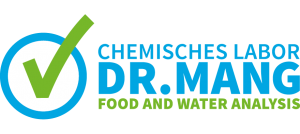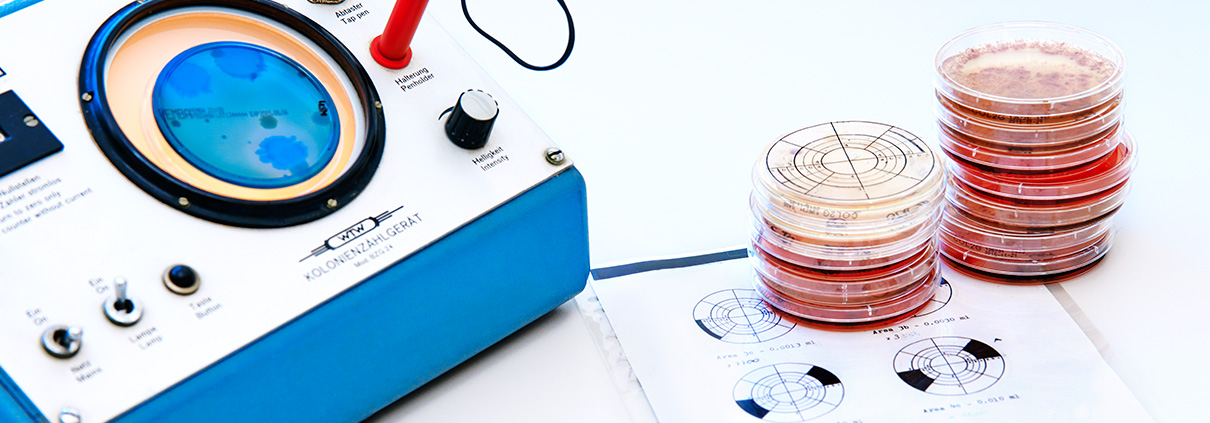Water is enriched with countless substances. Ideally, these are substances that are beneficial to health, even vital, in certain quantities. Unfortunately, substances also accumulate in water that are very harmful to health in the long term. If not handled properly, dangerous germs and pathogens can even form in water. This is why the law requires owners of heating and drinking water treatment systems above a certain size to have their water analysed regularly. With our drinking water analysis in Frankfurt, you are always on the safe side!
Drinking water test complete
Drinking water test complete is the most comprehensive water analysis in our range.
This water analysis determines the quality of your water.
We analyse the water for microbiological parameters and advise you on all questions relating to the purity of your drinking water
The water is analysed for the most common impurities and compared with the limit values of the Drinking Water Ordinance.
This allows you to see at a glance whether your water fulfils the measured parameters.
Microbiological parameters:
- E. coli
- coliform germs
- Colony count at 22 °C and 36 °C
Water Analysis (Last updated August 13th, 2025)
| Test procedures according to accreditation certificate D-PL-17110-01 according to DIN EN ISO/IEC 17025:2018 | |
| Tests in the following areas: selected microbiological and physical-chemical tests according to the Trinkwasserverordnung, sampling of raw and drinking water Analyses according to Trinkwasserverordnung – TrinkwV (a.F.) |
|
| Sampling | |
| Process | Titel |
| DIN ISO 5667-5 2011-02 |
Water quality — Sampling – Part 5: Guidance on sampling of drinking water from treatment works and piped distribution systems |
| DIN EN ISO 19458 2006-12 |
Water quality — Sampling for microbiological analysis |
| UBA Empfehlung December 18th, 2018 (Legionella) | Systemic testing of drinking water installations for Legionella according to the Trinkwasserverordnung – sampling, testing procedure and reporting of results |
| Empfehlung des Umweltbundesamtes 18. Dezember 2018 (Bundesgesundheitsblatt 2023 S. 224) (staggered stagnation sampling and random sampling) |
Assessment of drinking water quality regarding the parameters lead, copper and nickel |
| Attachment 1: Microbiological parameters | |
| Part I: General requirements for drinking water | |
| Parameter | Process |
| Escherichia coli (E. coli) | DIN EN ISO 9308-1 2017-09 |
| Enterokokken | DIN EN ISO 7899-2 2000-11 |
| Part II: Requirements for drinking water intended for supply in sealed containers | |
| Parameter | Process |
| Escherichia coli (E. coli) | DIN EN ISO 9308-1 2017-09 |
| Enterokokken | DIN EN ISO 7899-2 2000-11 |
| Pseudomonas aeruginosa | DIN EN ISO 16266 2008-05 |
| Part I: General indicator parameters | |
| Parameter | Process |
| Coliform bacteria | DIN EN ISO 9308-1 2017-09 |
| Colony count at 22 °C | TrinkwV §43 Absatz 3 |
| Colony count bei 36 °C | TrinkwV §43 Absatz 3 |
| Electrical conductivity | DIN EN 27888 1993-11 |
| Hydrogen ions concentration | DIN EN ISO 10523 2012-04 |
| Part II: Special requirements for drinking water in drinking water installation systems | |
| Parameter | Process |
| Legionella spec. | UBA Empfehlung 18. Dezember 2018 Aktualisierung Dezember 2022 (Bundesgesundheitsblatt 2023 S. 224) |
Abbreviations: DIN (Deutsches Institut für Normung e.V.), EN (European Standards), IEC (International Electrotechnical Commission), ISO (International Organization for Standardization), TrinkwV (Trinkwasserverordnung), UBA (Umweltbundesamt)

